 |
 |
 |
| |
ELIMINATING HEPATITIS C: A COMPREHENSIVE PROGRAM OF DIGITAL CASE FINDING AND LINKAGE TO CARE ACROSS A LARGE URBAN HEALTHCARE SYSTEM
|
| |
| |
AASLD 2020 virtual Nov 11-16
Reported by Jules Levin
Ponni V. Perumalswami1, Brooke Wyatt2, Anna Mageras3, Mark Miller4, Alyson L. Harty5, Ning Ma1, Chip Bowman- Zamora1, Amreen Dinani6, Andrew Kasarskis1, Douglas T.
Dieterich5, Maxence Vandromme7 and Andrea D. Branch4,8,
(1)Icahn School of Medicine at Mount Sinai, (2)Department of Meicine, Division of Liver Diseases, Icahn School of Medicine at Mount Sinai, (3)Department of Medicine, Division of Liver Diseases, Icahn School of Medicine at Mount Sinai, (4)Department of Medicine, Division of Liver Diseases, Icahn School of Medicine at Mount Sinai (ISMMS), (5)Mount Sinai Hospital, (6)Division of Liver Disease, Icahn School of Medicine at Mount Sinai, (7)Liver Disease, Icahn School of Medicine at Mount Sinai, (8)Department of Medicine, Division of Liver Diseases, Icahn School of Medicine at Mount Sinai Medical Center
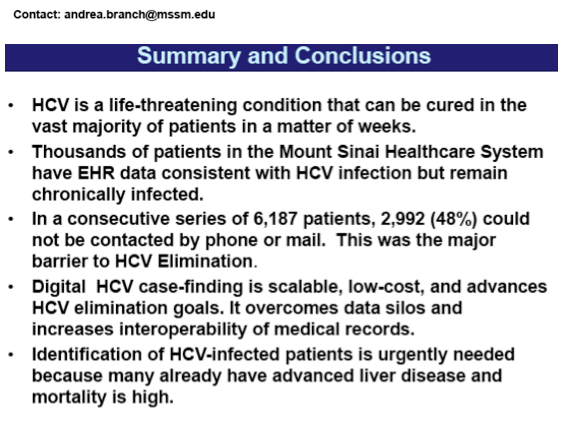
Background: Innovative programs are needed to eliminate HCV Many patients have screened positive for HCV RNA but remain untreated. We aimed to find these patients using information technology (IT), engage them in treatment, and identify major barriers to HCV elimination
Methods: A case finding algorithm was developed and applied to EPIC records of ∼2 5 million adults at our urban medical center (1/2000 to 12/2017). The algorithm identified 10,614 adults whose last HCV RNA test was positive Navigators reviewed charts manually Thus far, they have attempted to contact 6187 patients by dialing the patient's phone number ≥ 3 times. Patients who could be not be reached by phone were compared to those who could In April 2020, records were reviewed to identify patients likely to remain HCV-infected, as indicated by no record of HCV treatment and no marked decrease in ALT
Results: Among the 10,614 HCV RNA+ adults, median age was 60 2 years; most (63%) were male; 50% had a FIB-4 score ≥ 2.67, indicating significant fibrosis/cirrhosis. The 6187 patients whose charts were reviewed were similar to the group as a whole By April 2020, 31% of the 6187 patients had kept an HCV appointment (N=1862) or expressed interest in HCV treatment (N=39); 21% of the 6187 patients were not candidates for HCV treatment within our healthcare system (most commonly because they had moved away or died recently); and 48% (N=2992) could not be reached by phone (Figure) These patients were younger (56 vs 61 years), less likely to have FIB-4 ≥ 2.67 (46% vs 59%), and less likely to have private insurance (18% vs 50%) than patients who could be contacted by phone (p<0 001) The great majority (83%) of the patients who could not be contacted by phone likely remained HCV infected, as they had no record of HCV treatment and ALT had not decreased markedly.
Conclusion: Automated case finding in EPIC is a useful addition to the tools for eliminating HCV Our algorithms for digital medical record review provide an efficient and scalable method for HCV case finding that can be implemented immediately in many healthcare systems We aim to share them with all HCV
providers using EPIC Not being reached by phone was the most important barrier to initiating HCV treatment Additional novel IT tools are needed to contact HCV RNA+ patients who cannot be engaged by phone, tailoring the communication for a group that is relatively young, lacking private insurance, and generally non-cirrhotic.
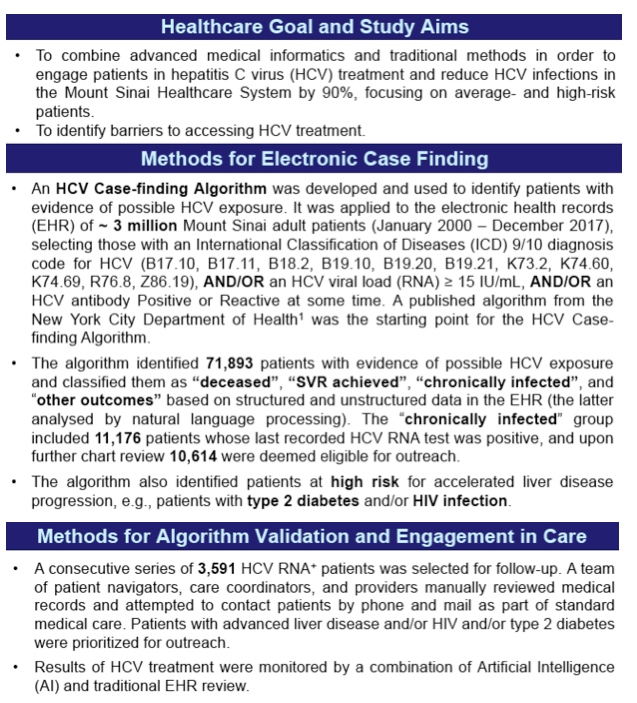
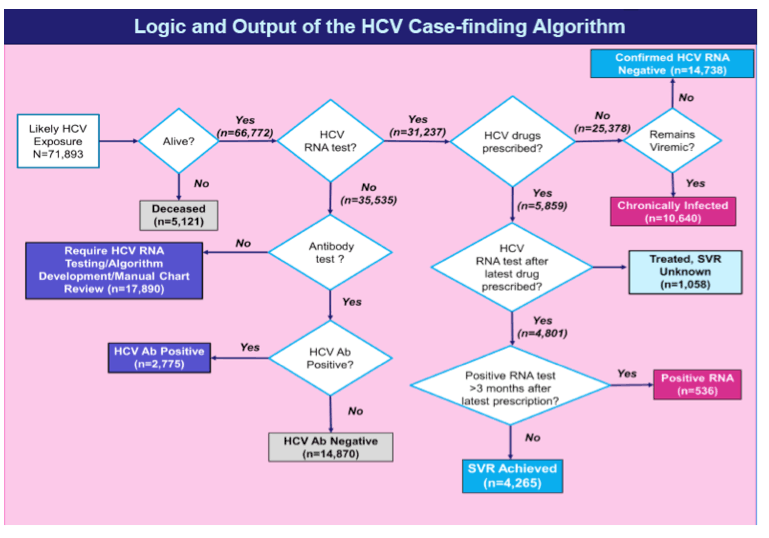
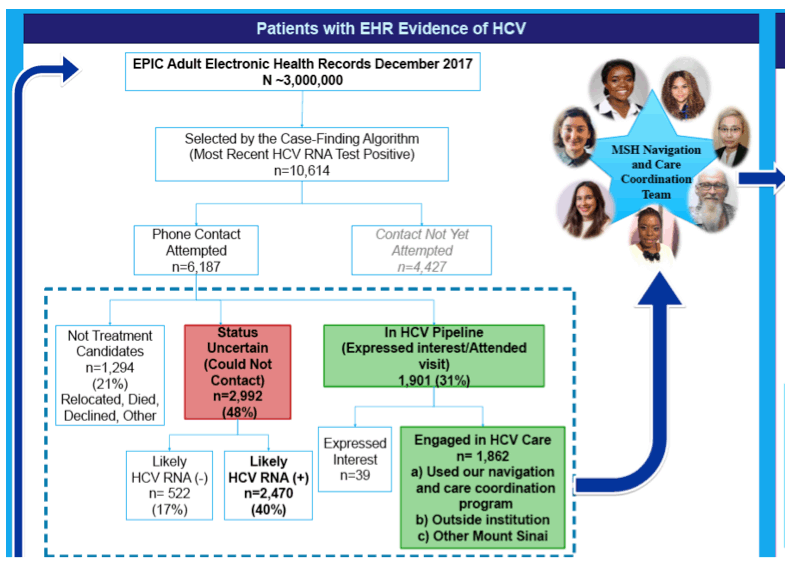
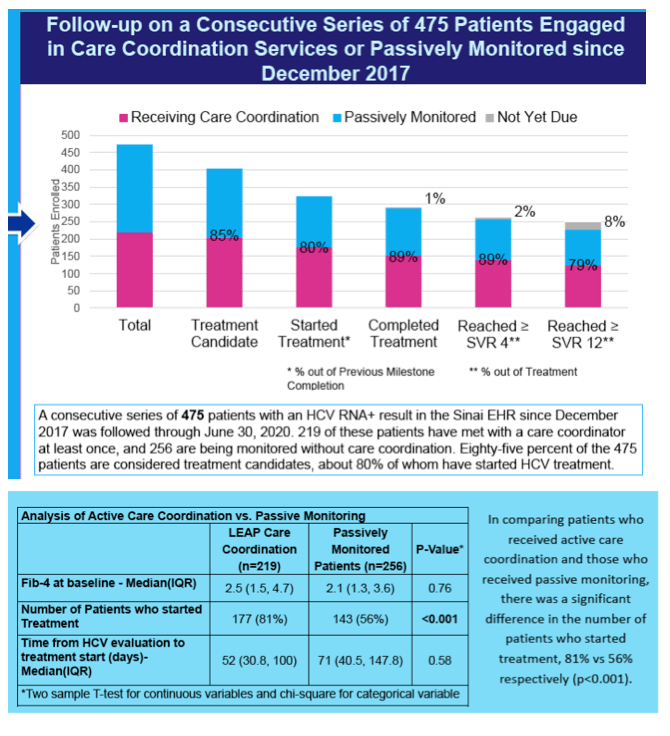
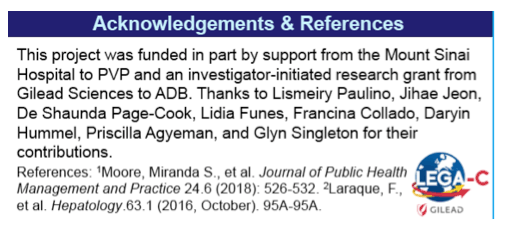
|
| |
|
 |
 |
|
|